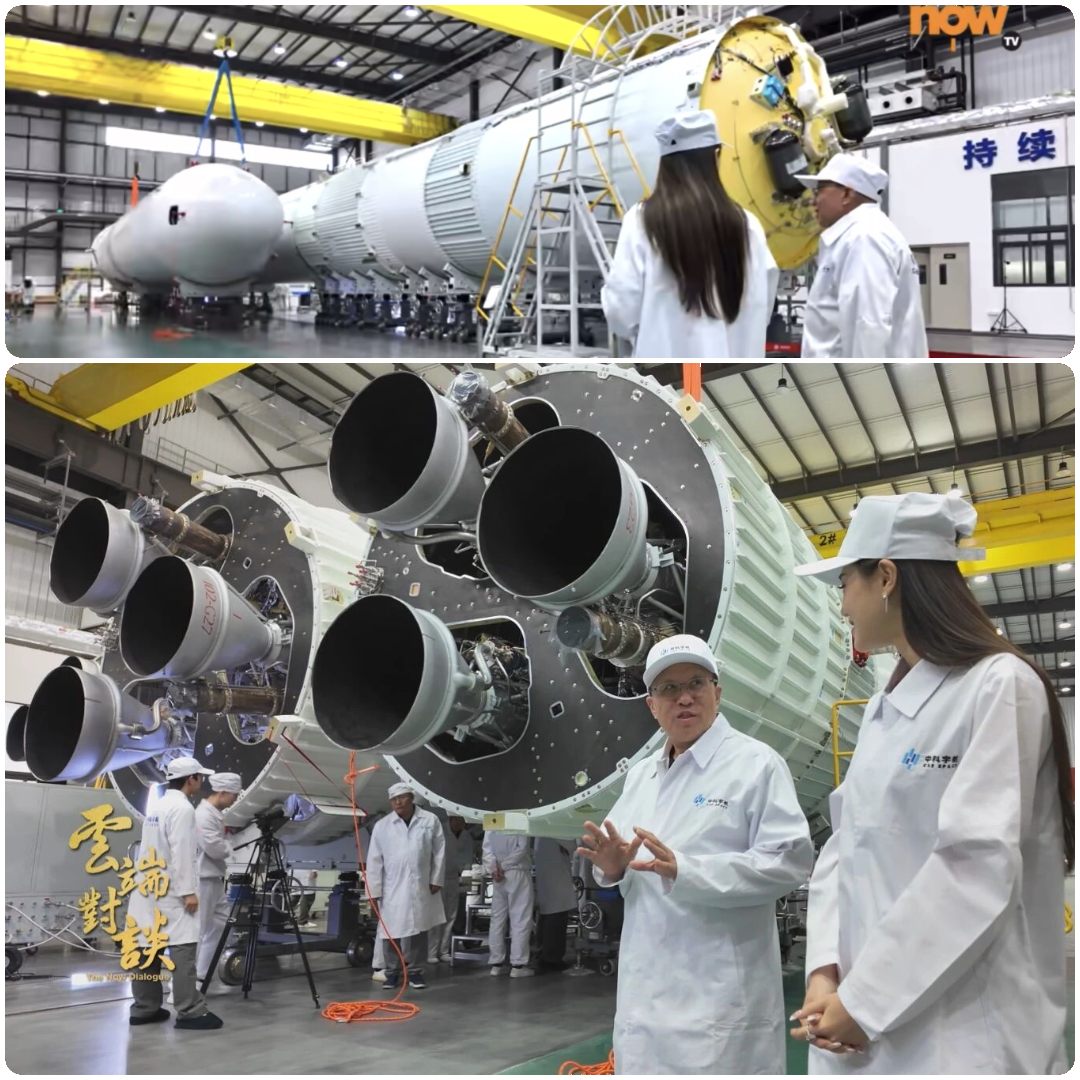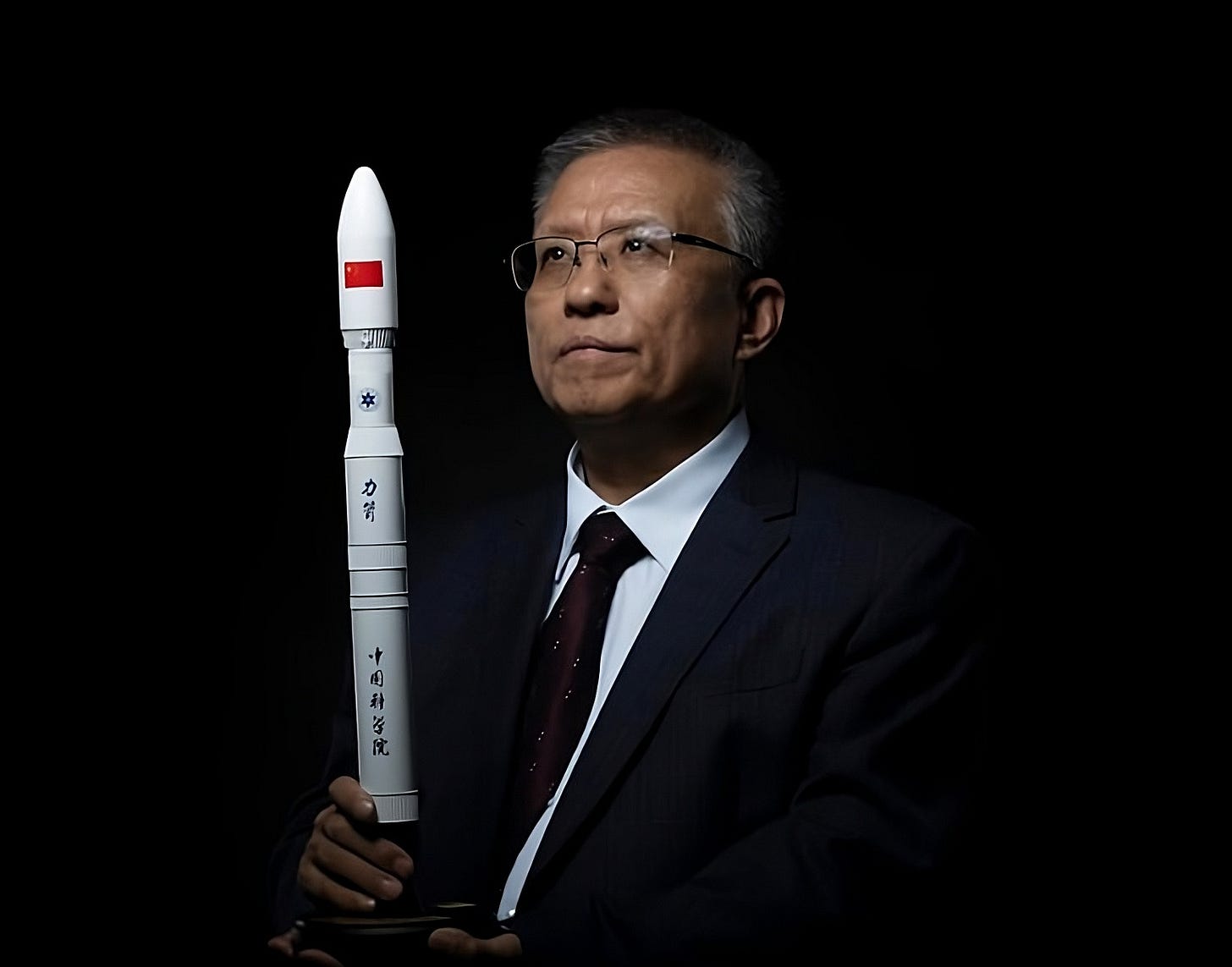Yang Yiqiang Provides Insights Into CAS Space, Kinetica Launch Vehicles
The Founder and Chairman recently participated in an interview about the commercial space company.
Around October 18th, CAS Space Founder and Chairman Yang Yiqiang (杨毅强) appeared on the show The Now Dialogue (云端对话) for a twenty-minute interview and tour around the company’s industrial base and headquarters in Guangzhou (广州市), in Guangdong (广东) province.
To begin, Yang brought his interviewer, Wu Xinchun (吴欣纯), and the production team through a cleanroom airlock to meet the partially assembled debut flight Kinetica-21 two-stage launch vehicle. To introduce the rocket, he explained:
“We’re currently performing the docking of the core stage and booster stage2. Starting from 2027, as our recovery technology achieves breakthroughs, we’ll enter the recovery phase. Currently, we’re mainly recovering the first stage because it has the highest value.”
Yang emphasized that recovering and reflying at least sixty-five percent of the rocket’s value is necessary to make it economically viable. He pointed out the first-stage booster, noting that they contain three engines each and has the longest structural section of the vehicle, making it the most expensive component to manufacture.
Beyond the two-stage configuration, CAS Space is pursuing a three-stage variant with the recently tested two-ton thrust Kinecore-4 (力擎四号) upper-stage engine. This upper-stage will provide the launch vehicle with geostationary transfer orbit capability, and give it what Yang described as a ‘space tugboat’ capability for orbital maneuvering into specific orbits.
After leaving the first flight vehicle, Yang declared that Kinetica-2, with its 12,000-kilogram to low Earth orbit payload capacity, is positioned well to become a primary launch solution for China’s mega-cosntellation efforts (a demonstration launch contract for the Shanghai-backed Qianfan was awarded in August). That would be after a debut launch.
Yang did not provide any new information on when Kinetica-2’s debut flight could occur, but CAS Space’s teams were obviously working on the first flight vehicle during his interview. What is known already is that the debut flight, set for either November or December, will carry the Qingzhou (轻舟) cargo spacecraft on a free-flying demonstration mission from Launch Area 140 (recently completed) at the Jiuquan Satellite Launch Center, with first and second-stage static fires completed.

Kinetica-1, CAS Space’s active four-stage solid-fuelled rocket, had a short mention in the interview, with Yang mentioning that it was developed between 2019 and 2022 and is now part of China’s regular orbital launches, accounting for a claimed sixty percent of commercial space sector missions.
Later in the interview, Yang discussed his move to found CAS Space and leave the national space program3. He described the reasons why, as technology had suitably progressed and that market demand established the conditions for commercial space companies like his, rather than just recognising a business niche.
Yang stated that while China’s national program had developed the country’s space capabilities from the ground up, the country’s industry had reached a point where new approaches were necessary. He expressed his view that technologies only truly mature when they serve the general public, citing the historical progression of aircraft and cars from novelties to military applications to civilian mass adoption. Rockets, he argued, must follow the same path, with CAS Space looking to find it with civilian adoption. To find that path, Yang says that three objectives are driving the company: advancing space technologies, developing space as an active economic sector, and enabling more accessible deep space exploration.
The location of CAS Space facilities in Guangzhou, specifically in Nansha (南沙区) district, within the Greater Bay Area4, plays a part in the company’s objectives, according to Yang. In the region, there is an existing industrial manufacturing base, satellite companies needing launch solutions, existing international openness for technology exchange and market access, as well as proximity to universities in Guangzhou, Shenzhen (深圳市), and Hong Kong (香港) for talent recruitment. So far the with the choice of Nansha, CAS Space has established and maintained fifty-nine strategic partnerships between customers and industrial supply chain partners.
From the China’s Launch Site and Rockets page:
CAS Space’s partially reusable launch vehicle is Kinetica-2, flying out of the Jiuquan Satellite Launch Center. The vehicle burns rocket-grade kerosene and liquid oxygen in both of its stages.
Kinetica-2 has a claimed payload capacity of:
12,000 kilograms to low Earth orbit with first-stage reuse.
8,000 kilograms to sun-synchronous orbit with first-stage reuse.
The first-stage of Kinetica-2 is powered by nine 85-ton thrust YF-102 engines that burn rocket-grade kerosene and liquid oxygen for a total of 766 tons of thrust. Kinetica-2’s second-stage is powered by a vacuum-optimized version of the same engine.
On the launchpad, Kinetica-2 is 53 meters tall and weighs 625,000 kilograms fully fuelled. Each booster core is also 3.35 meters in diameter.
Kinetica-2’s first-stage consists of three booster cores, each with three engines. The booster cores do not separate, and, starting in 2027, will land as a single unit.
Yang spent thirty-one years at the China Academy of Launch Vehicle Technology before founding CAS Space, including serving as the Chief Commander of the Long March 11. During his time working on the Long March 11, he introduced concepts including a launch service model offering dedicated and rideshare services, along with a customer loyalty points system depending on payload capacity purchased.
The Guangdong–Hong Kong–Macao Greater Bay Area, sometimes referred to as the Pearl River Delta, is an integrated economic area with a population of 86 million people and an economy of about two trillion United States Dollars, made up of nine cities and two Special Administrative Regions (Hong Kong and Macao).



